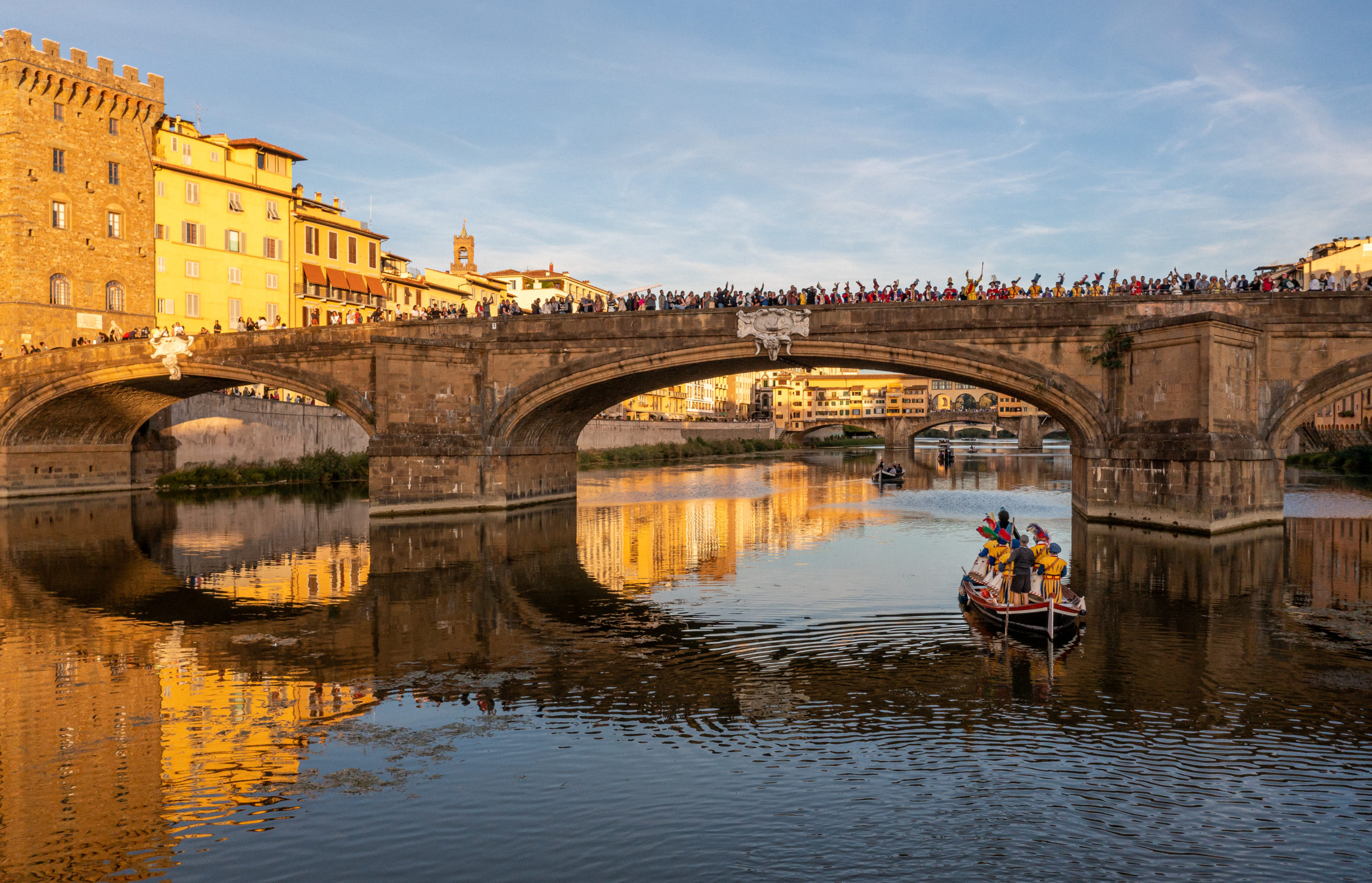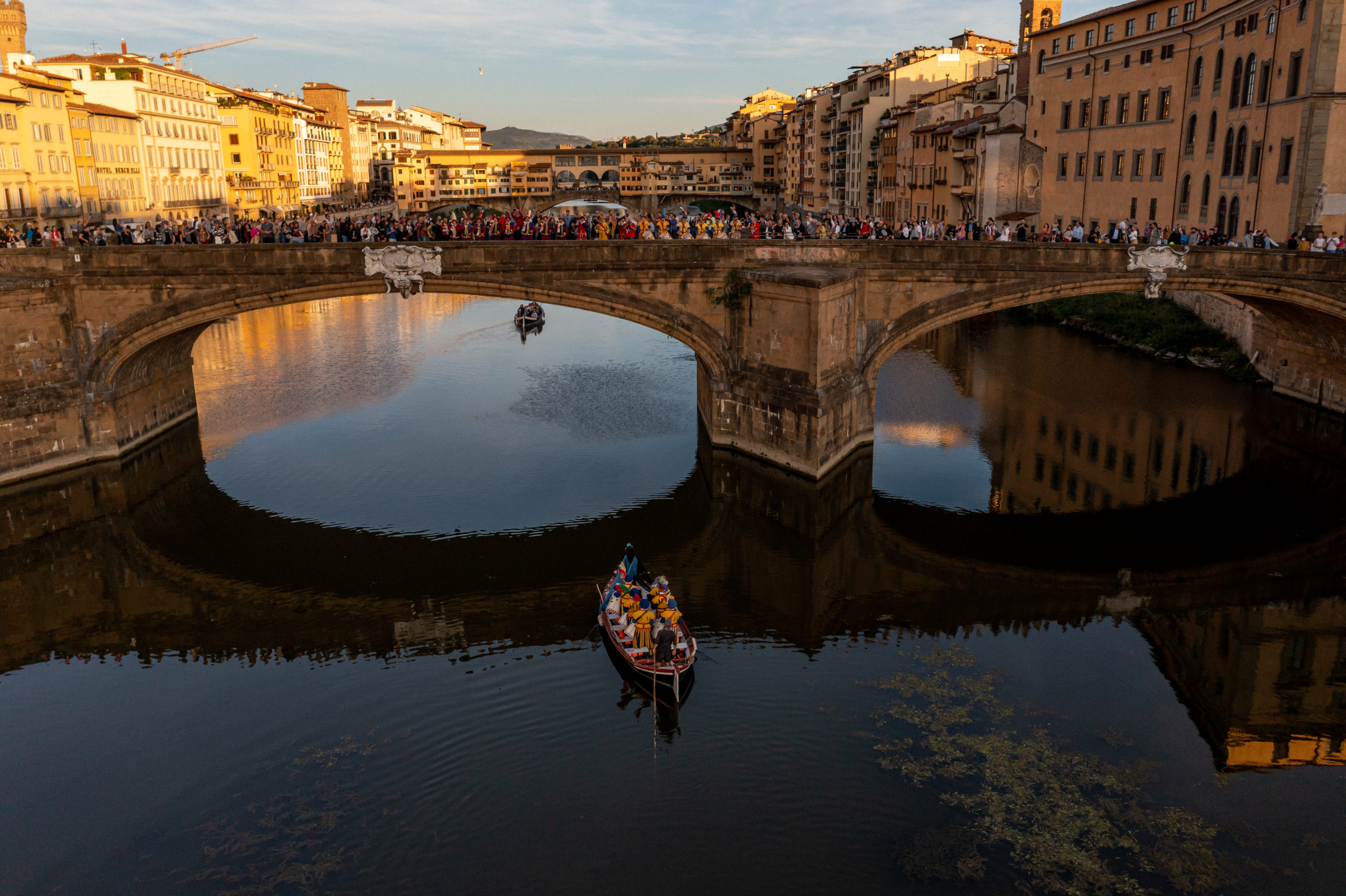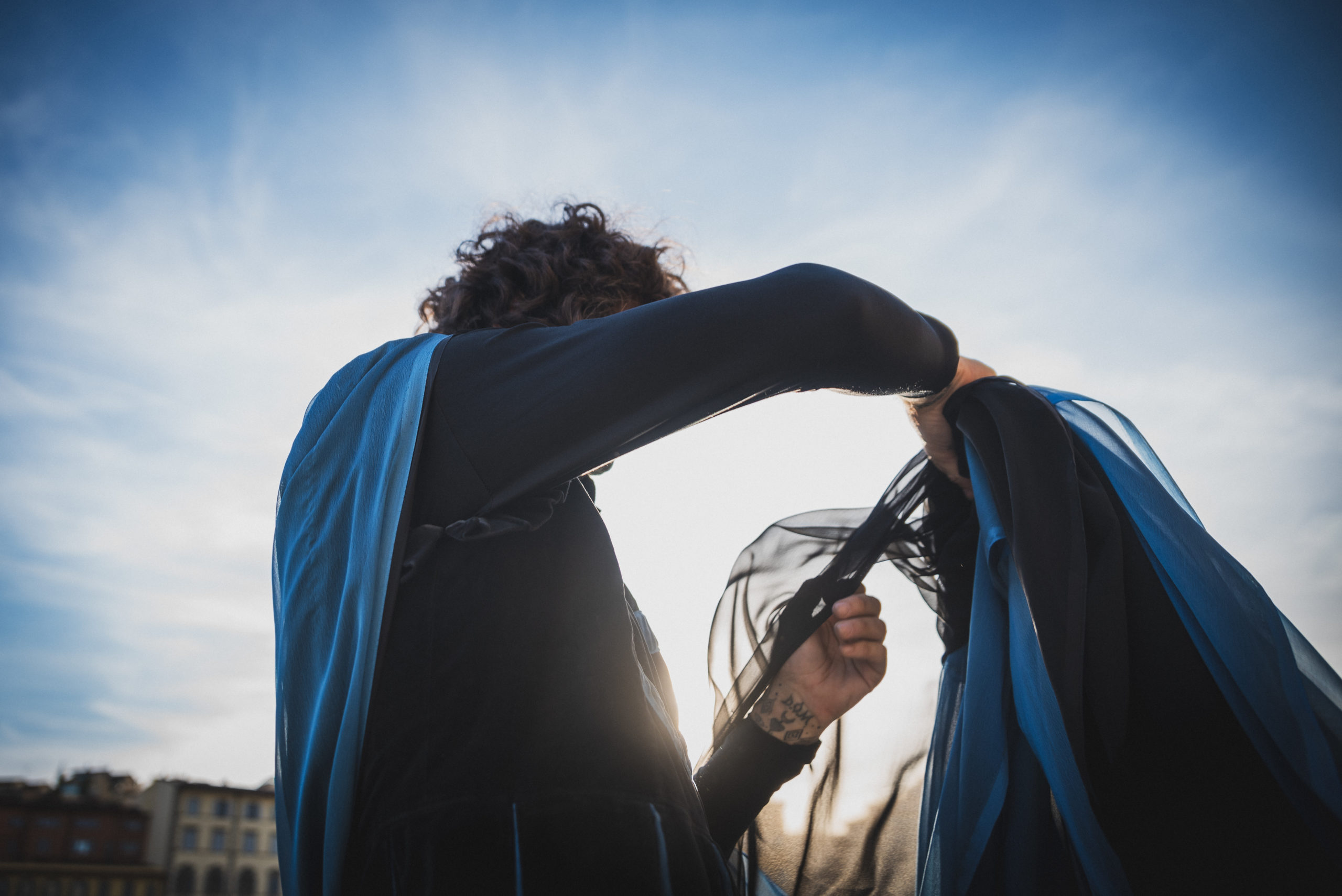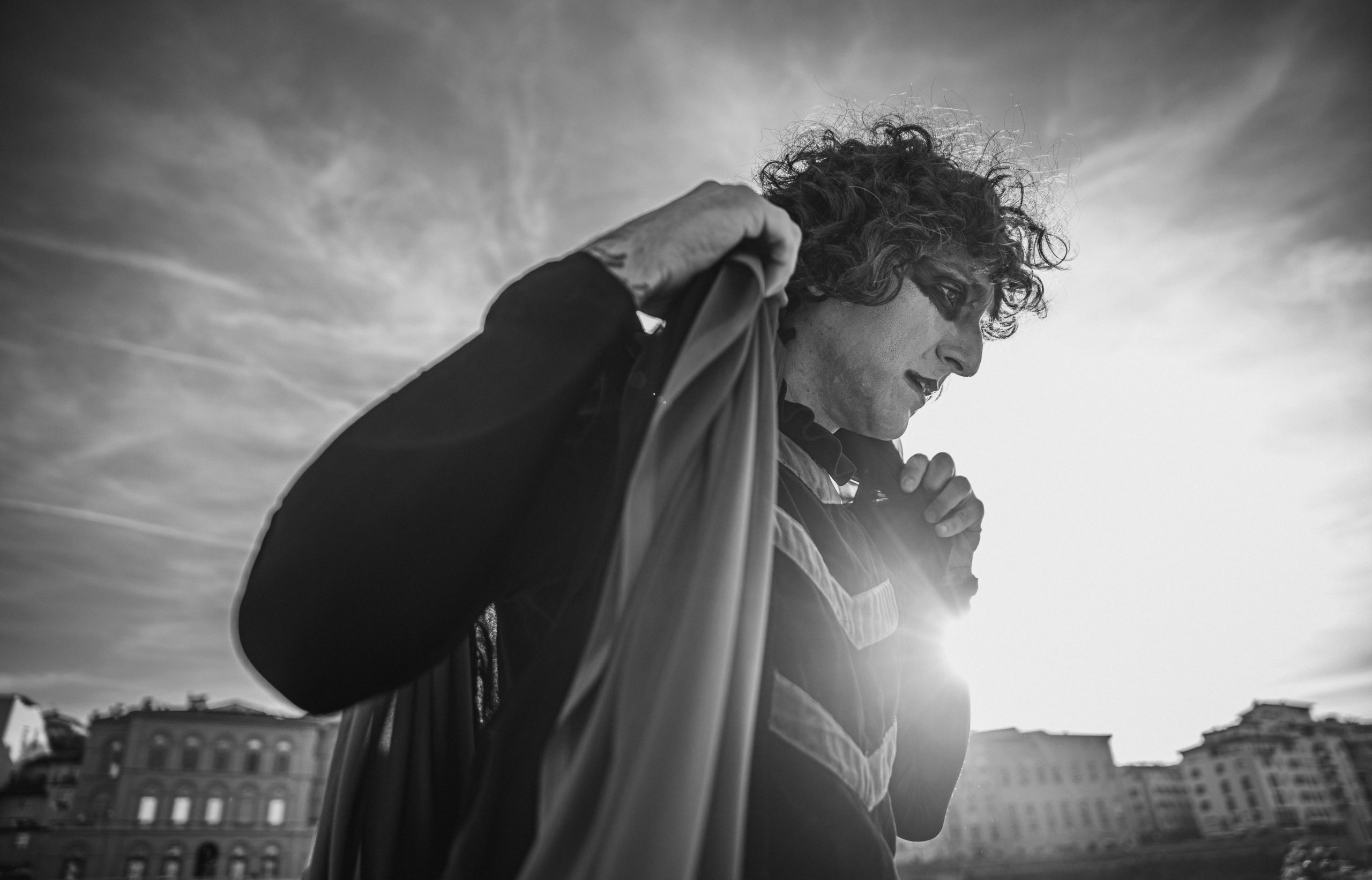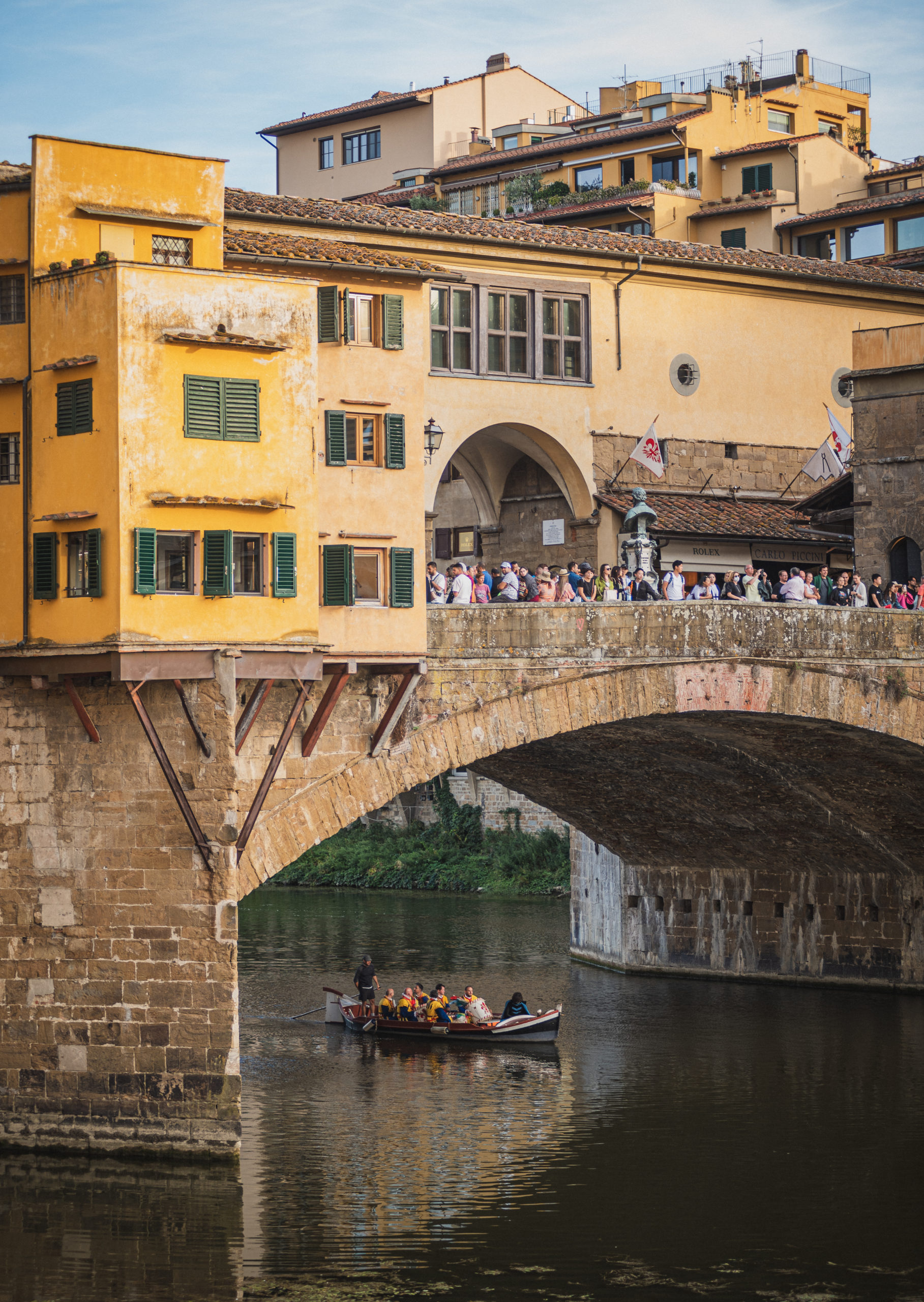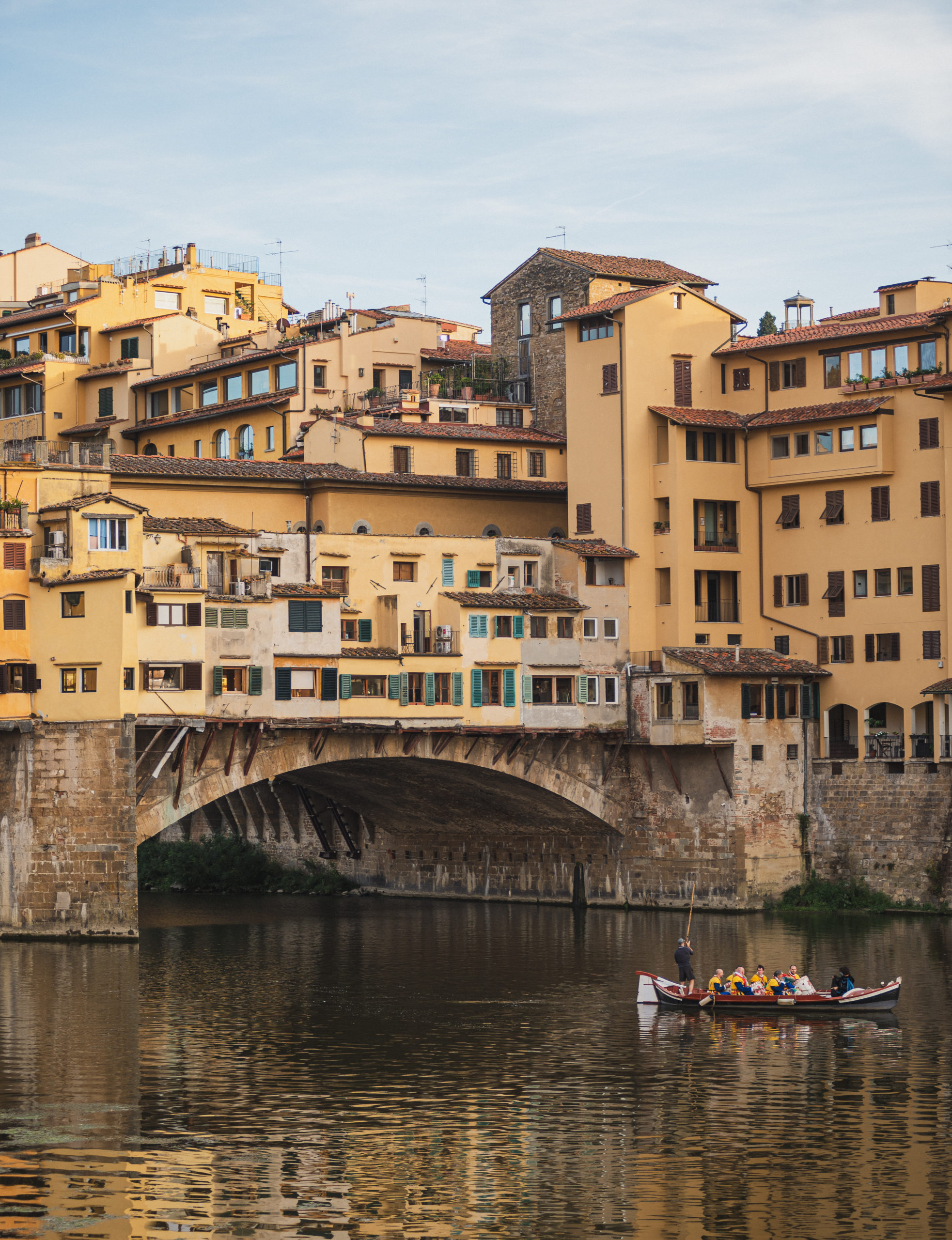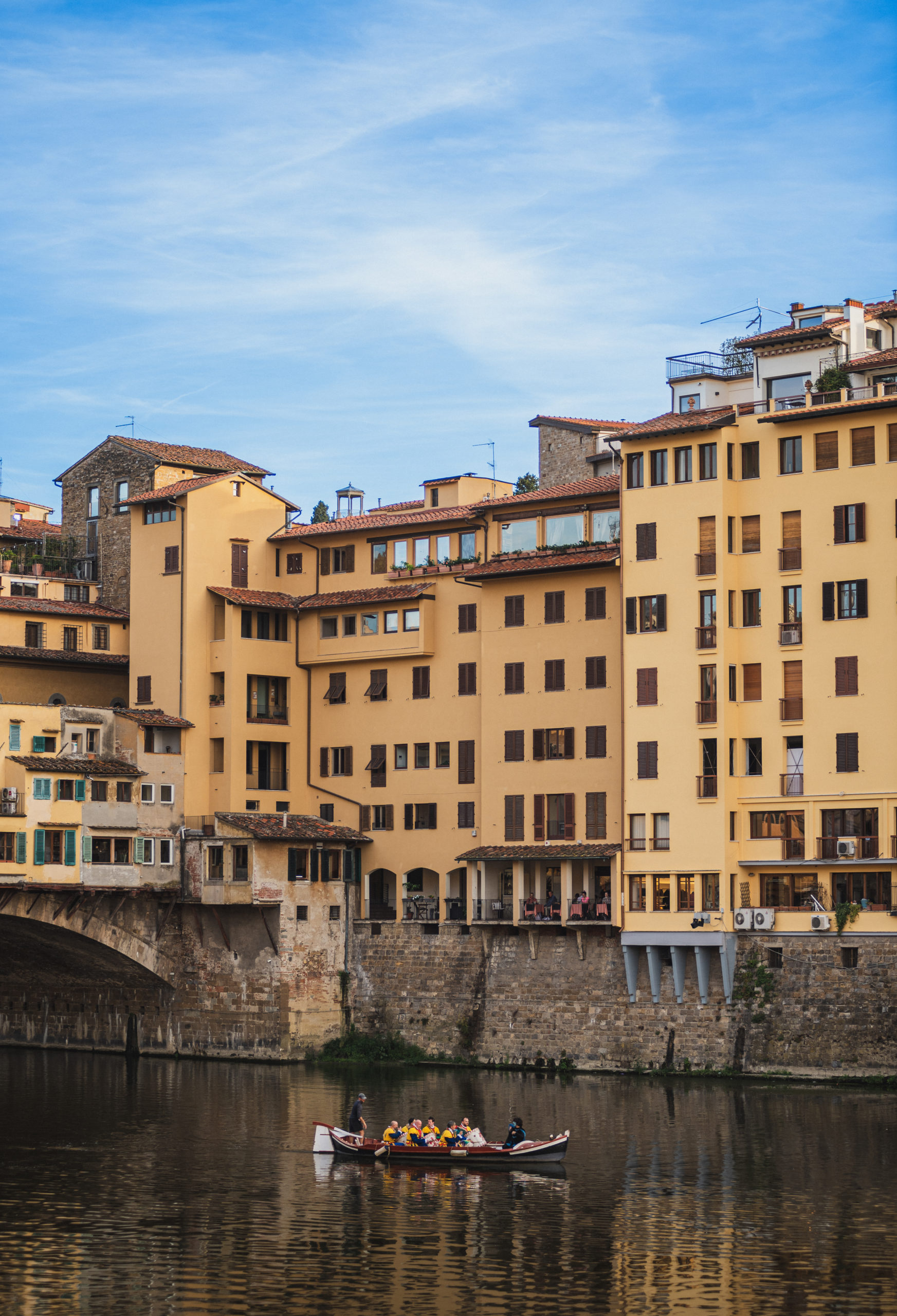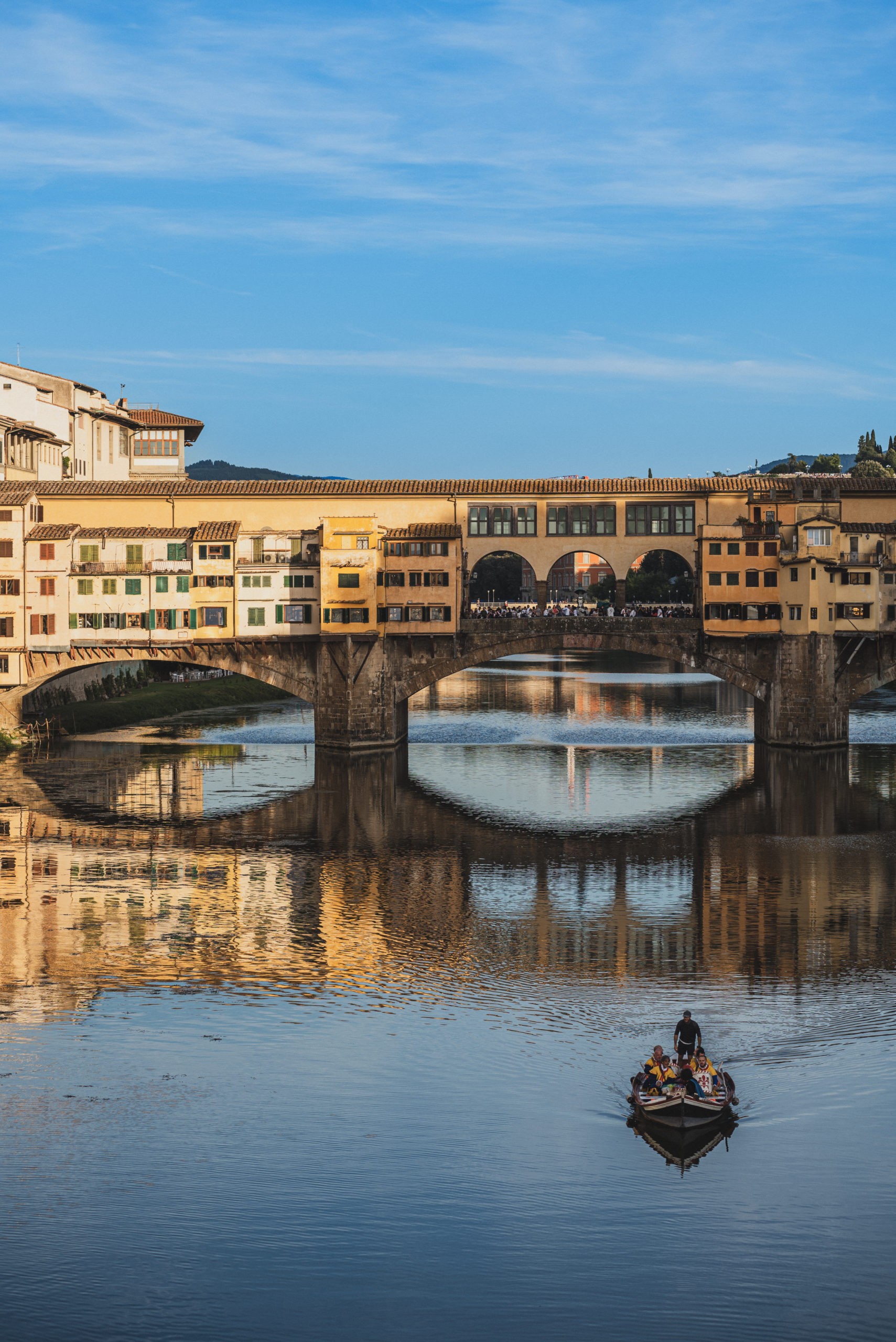Where and when
The Museo Novecento, on the occasion of FAW – Florence Art Week, is pleased to present Water Spell, a project created by Emiliano Maggi (Rome, 1977), curated by Caroline Corbetta and with the artistic direction of Sergio Risaliti.
A double project, conceived by Emiliano Maggi starting from the reworking of a mythical figure, that of the triton, which the Roman artist transforms into a sort of hybrid halfway between man and animal, between male and female. As in the first book of Metamorphoses, in which Ovid tells of a triton emerging from the waters playing a shell and announcing to the world the triumph of the gods and the supremacy of natural events over humanity, so Emiliano Maggi gives life to a series of alchemical creatures bearers of a new, visionary harmony between man and nature.
The heart of the performance will be the Arno, transformed by the artist into a sort of stage on which to stage his language that intertwines music, sculpture and choreography. Exceptionally, Maggi has decided to involve the Florentine Historical Parade and I Renaioli in this performance staging. Accompanied by a procession of trumpets and drums, on board a Maggi boat he will travel backwards along the Arno, starting from Ponte alla Carraia and passing under Palazzo Corsini (headquarters of the BIAF – International Biennial of Antiques in Florence), up to arrive at the Ponte Vecchio.
This nòstos, which is also metaphorical, conceals the artist’s source of inspiration, contained in the history of the city’s art, in its public monuments, in its iconography and myths. Through a completely personal expressive language, Maggi re-elaborates the ancient representations of tritons such as those that decorate the late sixteenth-century Fountain of Neptune in Piazza della Signoria or the frescoes by Vasari in the Sala degli Elementi in Palazzo Vecchio. Reviving Renaissance and classical myths and fabulas seems to dominate the artist’s inspiration, who is not new to forms of chronological, thematic and iconographic hybridization in which, for example, the human merges with the animal, the plant world with the marine one.
With Water Spell, myths and iconographies of the past re-emerge, renewed, which demonstrate their eternal relevance and confirm the substantial role of art in designing a sustainable future.
The Water Spell performance is made in collaboration with the Historical Parade and I Renaioli.
Emiliano Maggi
Emiliano Maggi, born in Rome in 1977, explores the constitution and disintegration of the self through works that, expanding the range of figurative representation, evoke abstract regions beyond the realm of recognizability. A research focused on the human form which, in the artist’s vision, includes not only the body but also the mind, imagination and soul.
His works arise from an intuitive relationship with a wide range of techniques and materials – from painting to sculpture, from performance to dance, to the composition of sounds and musical elements – and form a world in which cultural anthropology, iconography of fairy tales are intertwined. horror, fantasy and science fiction cinema, erotic literature and rural imagery.
In recent years, ceramic has become a privileged language with which the artist refers to the human body indirectly, also through clothing or footwear, to affirm the value of ambiguity, freeing the imagination towards an unconventional, freer and plural. Among the museums, institutions and galleries that have exhibited his works are: Setareh Gallery, Dusseldorf Germany; Palazzo Abatellis Museum, Palermo Italy; Maxxi Museum, Rome Italy; Macro Museum, Rome Italy; Revolver Galeria, Buenos Aires, Argentina; National Museum and Ancient City of Cosa, Ansedonia, Italy; Nomas Foundation, Rome, Italy; Operativa Arte Contemporanea, Rome, Italy; Civic Museum of Castelbuono, Palermo, Italy; Certosa di Padula, Salerno, Italy; Menegaz Foundation, Palazzo Clemente Castelbasso, Italy; MRAC, Regional Museum of Contemporary Art in Occitanie, Sérignan, France; Revolver Galeria, Lima, Peru; Villa Lontana Santarelli Foundation, Rome, Italy; Mimosa House, London UK; American Academy in Rome, Italy; Lorcan O’Neill Gallery, Rome, Italy; Palatine Forum, Rome, Italy; Q21, Vienna, Austria; Swiss Institute, Rome, Italy; Mona Museum, Hobart, Tasmania; Macro Testaccio, Rome, Italy; Italian Institute of Culture, Los Angeles USA.
